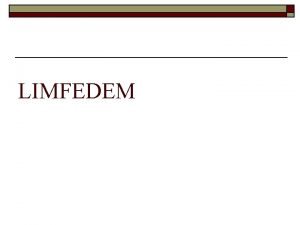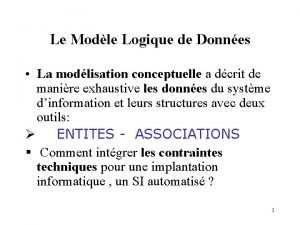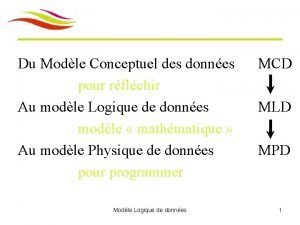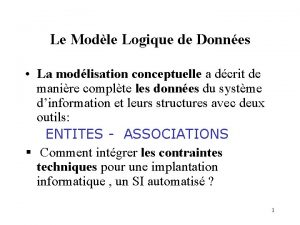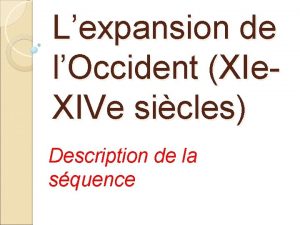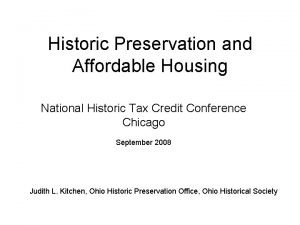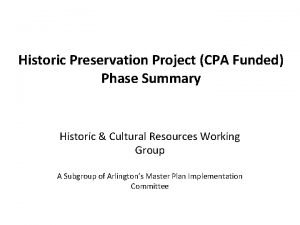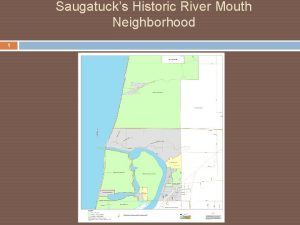Direct economic losses mld US Historic losses from
![Direct economic losses [mld. US$] Historic losses from weather disasters 1950 -2005 economic losses Direct economic losses [mld. US$] Historic losses from weather disasters 1950 -2005 economic losses](https://slidetodoc.com/presentation_image/47f177d2b0e45d2252e118a5be4dd270/image-1.jpg)




















- Slides: 21
![Direct economic losses mld US Historic losses from weather disasters 1950 2005 economic losses Direct economic losses [mld. US$] Historic losses from weather disasters 1950 -2005 economic losses](https://slidetodoc.com/presentation_image/47f177d2b0e45d2252e118a5be4dd270/image-1.jpg)
Direct economic losses [mld. US$] Historic losses from weather disasters 1950 -2005 economic losses (in values of 2006) insured losses (in values of 2006) trend economic losses trend insured losses © 2007 Nat. Cat. SERVICE, Geo Risks Research, Munich Re 1

Findings • Global weather losses increased from 8. 9 billion to 45. 1 billion dollar per year between 1977 -2006 • Losses increased 125% per decade • Global average GDP increased 35 -45% per decade Bouwer et al. 2007, Science 2

Mega-cities with over 5 million inhabitants 1950 Analysis by Munich Re Data: U. N. Population Division 3

Mega-cities with over 5 million inhabitants 2015 Analysis by Munich Re Data: U. N. Population Division 4

Findings • Projections 2005 -2015: – Losses increase up to 22% (Tokyo) and 88% (Shanghai, Jakarta) – Affected population increase up to 35% (Dhaka) Bouwer et al. 2007, Science 5

Conclusions • • • No climate signal in loss records yet Major driver: increased exposure Therefore role of climate seems negligible (still) Disproportionate increase in vulnerabilities Adaptation/vulnerability reduction: – Flood protection – Incentives for risk reduction, e. g. government programmes for flood proof building, insurance, etc. 6

Financing climate adaptation 1. Why adapting? 2. What are the costs? 3. Financierings constructions 4. Sources under the climate convention 5. Other sources 6. Conclusions 7

1. Why adapting? CO 2 emissies 2000 -21000 Bron: IPCC 2001 8

1. Why adapting? Bron: Meinshausen 2004 9

Consolidating our knowledge: impacts by sector 10

1. Waarom adaptatie? Zeespiegelstijging 2 x CO 2 Bron: IPCC 2001 11

2. What are the costs? • Damages: in the order of 2 -10% of global GBP, depending on the temperature rise. • Costs of adaptation: 7 -10% of the costs of damages • But: large uncertainty about vulnerability Bron: IPCC 2001 12

3. Financiering constructions 1. Mutual interest Adaptation in public investments 2. Solidarity ODA 3. Liability Adaptation funds under climate convention 13

4. Sources under the climate convention • Special Climate Change Fund Part of 410 miljoen US$ for technology transfer • Least Developed Countries Fund Part of 410 miljoen US$ for National Adaptation Programmes of Action • Adaptation Fund Revenues from CDM (~2% of emission reductions) for implementation 14

5. Other sources • Global Environment Facility • ODA • Public investments • Private investments • Insurances (re insurances) 15

5. Global Environment Facility • Strategic Priority on Adaptation: 50 miljoen US$ • Other multilateral environment conventions, including – Convention on Biodiversity – Convention on Wetlands – Convention on Desertification 16

5. ODA • ~50 billion US$ per year, but decreasing • Objective and targets: development and MDGs • Chances for mainstreaming 17

5. Public investments • Investments in infrastructure: – Coastal defence – Water management – Energy production – Transport (roads, rail, bridges) • Disaster preparedness • Early warning • Education and awareness raising 18

5. Private investments • Potentially 207. 6 miljard US$ per year (1998 -2002) • Possibly to direct via spatial planning and sectoral policies towards land use and constructions 19

5. Insurances • Coverage for damages due to extremes • Measures to mitigate damages e. g. Buidling codes and regulations 20

6. Conclusions • Climate change is unavoidable • Financing under the Convention is available for studies • Financing under the UNFCCC Convention is grossly insufficient for implementation measures • Therefore: awareness raising about climate risks • Mainstreaming in investments • Additional financing mechanisms necessay: for example compensation via international law? 21
 Contoh soal kehilangan energi pada pipa
Contoh soal kehilangan energi pada pipa Cmu mld
Cmu mld Mld base de données exemple
Mld base de données exemple Efleraža
Efleraža California vehicle code 405095
California vehicle code 405095 Mld exemple
Mld exemple Mcd vers mld
Mcd vers mld Mld exemple
Mld exemple El jurament dels horacis
El jurament dels horacis Alaska historic preservation act
Alaska historic preservation act Historic scotland volunteering
Historic scotland volunteering Historic tax credit syndication
Historic tax credit syndication Tonsillitis prefix and suffix
Tonsillitis prefix and suffix Historic site
Historic site Historic tax credits 101
Historic tax credits 101 Que es la novela idealista
Que es la novela idealista National historic preservation act
National historic preservation act Historic site
Historic site Bloombos
Bloombos What is psychology's historic big issue
What is psychology's historic big issue Elegies de la represa vi context historic
Elegies de la represa vi context historic Virginia department of historical resources
Virginia department of historical resources



